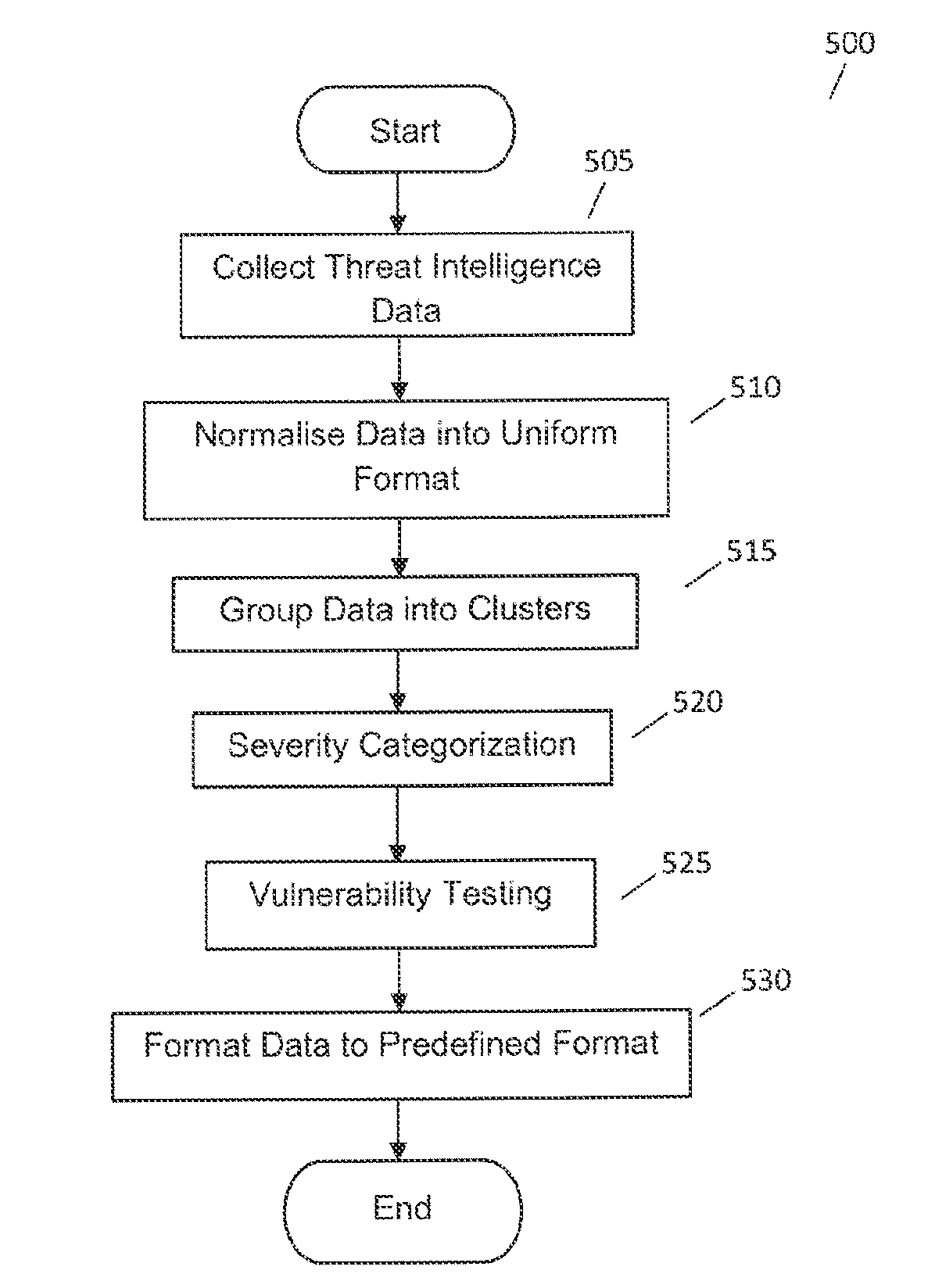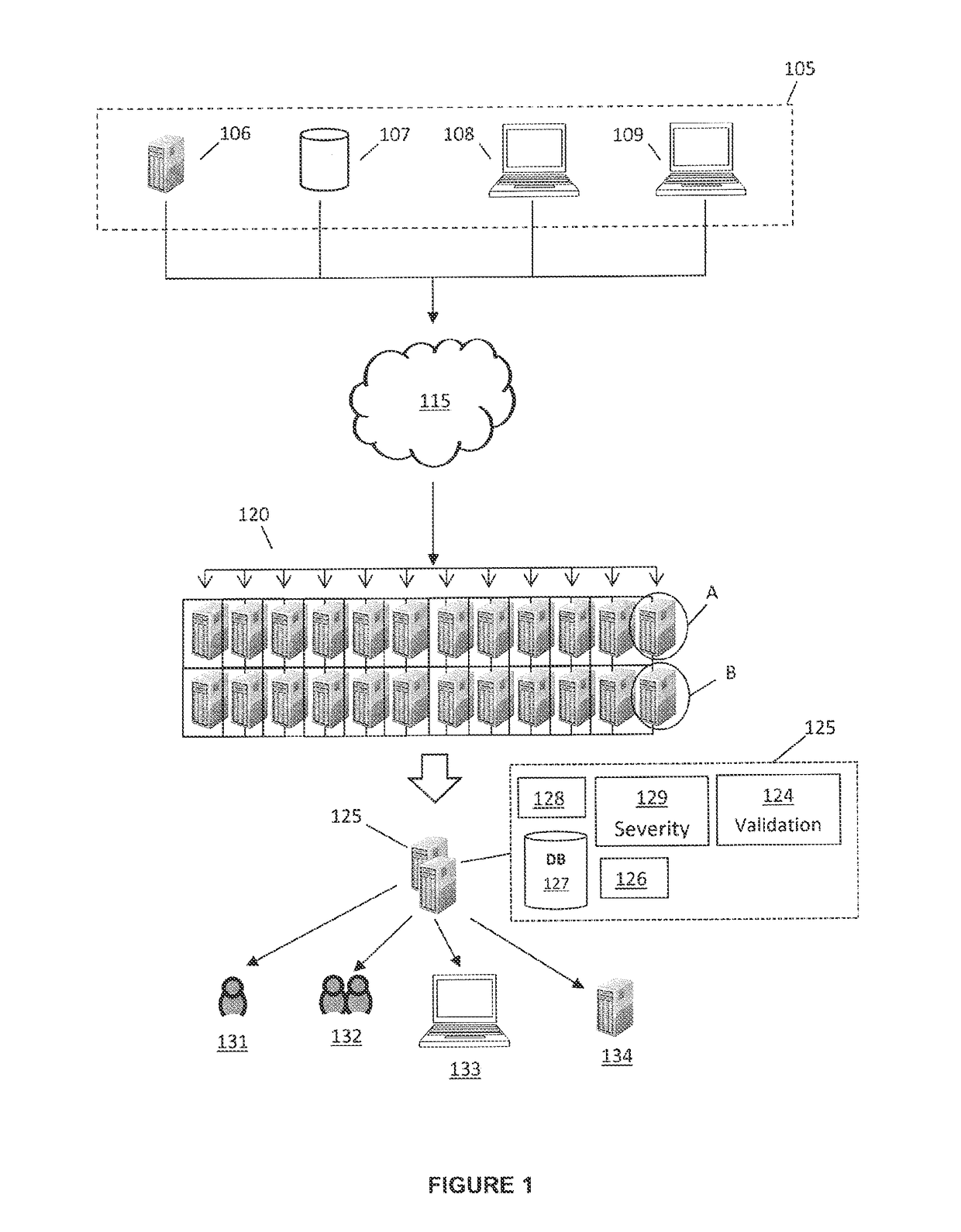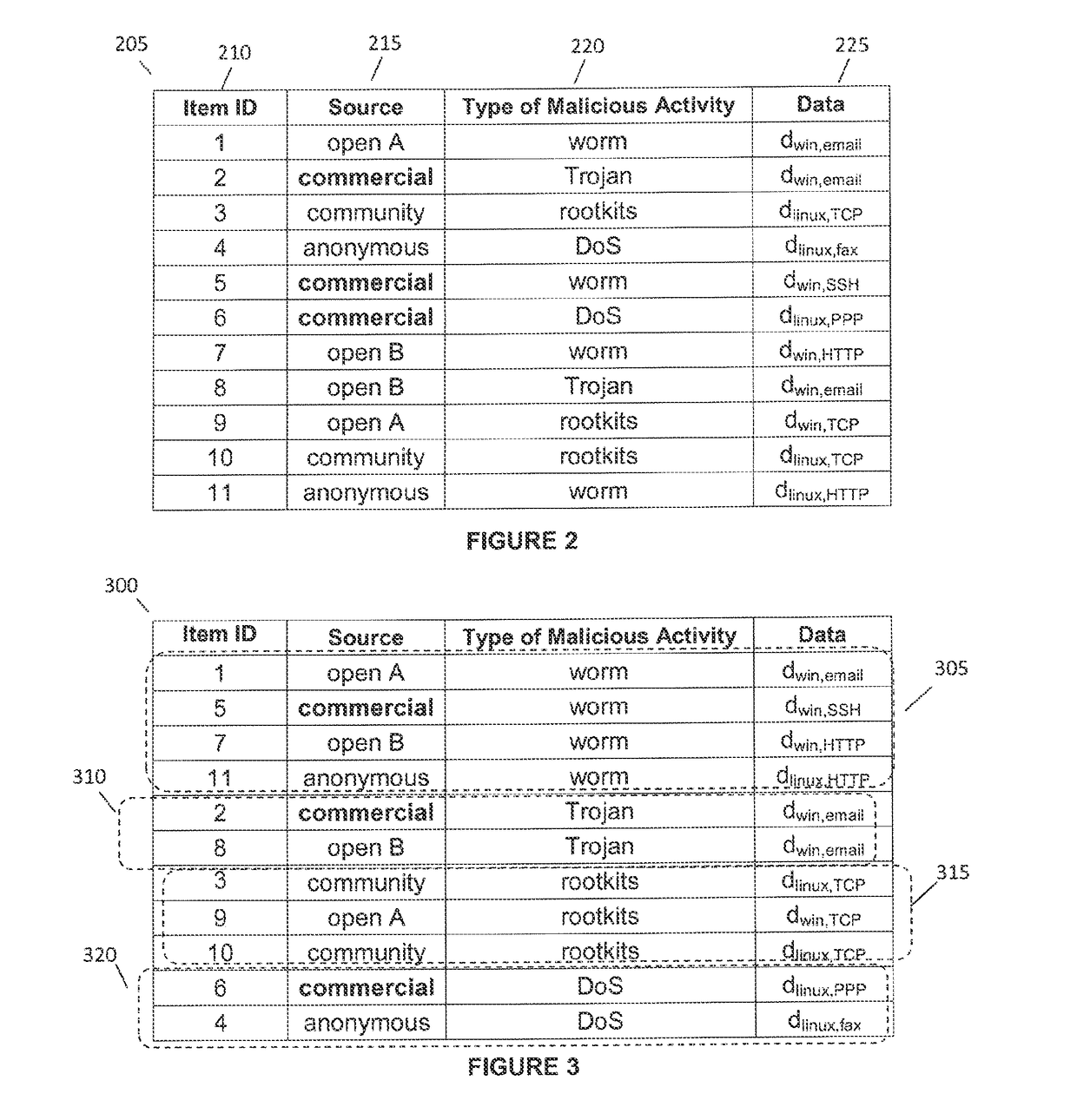System and Method for High Speed Threat Intelligence Management Using Unsupervised Machine Learning and Prioritization Algorithms
a threat intelligence and unsupervised machine learning technology, applied in the field of system and method for consolidating threat intelligence data, can solve the problems of inability of network security providers to acquire, difficulty in responding to and reducing these attacks for existing security professionals and their management tools, and widespread doubt in the ability of organisations or governments that utilize the received threat intelligence. , to achieve the effect of reducing the amount of data, effective and efficient aggrega
- Summary
- Abstract
- Description
- Claims
- Application Information
AI Technical Summary
Benefits of technology
Problems solved by technology
Method used
Image
Examples
Embodiment Construction
[0036]This invention relates to a system and method for consolidating threat intelligence data for a computer and its related networks. In particular, the invention involves collecting massive volumes of raw threat intelligence data from a plurality of sources and partitioning the collected data into a common transportable incident format for cluster analysis. The normalised data is then clustered using unsupervised machine learning algorithms. The resulting organized threat intelligence data subsequently undergoes a weighted asset based threat severity level correlation process. All the intermediary network vulnerabilities of a particular computer network are utilized as the critical consolidation parameters of this process. The final processed intelligence data gathered through this high speed automated process is then formatted into predefined formats prior to transmission to third parties.
[0037]FIG. 1 illustrates a network diagram of a system in accordance with embodiments of th...
PUM
 Login to View More
Login to View More Abstract
Description
Claims
Application Information
 Login to View More
Login to View More - R&D
- Intellectual Property
- Life Sciences
- Materials
- Tech Scout
- Unparalleled Data Quality
- Higher Quality Content
- 60% Fewer Hallucinations
Browse by: Latest US Patents, China's latest patents, Technical Efficacy Thesaurus, Application Domain, Technology Topic, Popular Technical Reports.
© 2025 PatSnap. All rights reserved.Legal|Privacy policy|Modern Slavery Act Transparency Statement|Sitemap|About US| Contact US: help@patsnap.com



